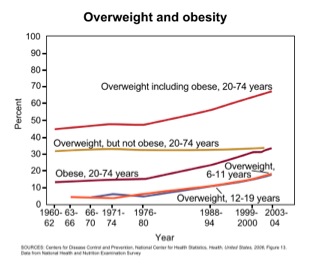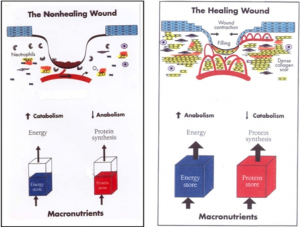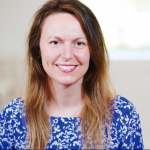Dr. Millie Lytle, ND, MPH, CNS
@milliesays
To facilitate the body’s innate ability to heal itself is a principle of Naturopathic Medicine. As Naturopathic Doctors, we are taught to abide by the healing power of nature – vix medicatrix naturae. Under this understanding, Naturopathic Doctors use the therapies in our toolbox such as nutrition, vitamins, herbs, homeopathy, lifestyle counseling, manual therapies, and energy work to manifest and augment the normal healing response of the body. Doing so promotes wellness, health, stamina, strength, beauty and even ever-lasting youth. NDs also focus on removing obstacles to cure that impede the patient’s chance for wellness. In a nutshell, NDs treat the root cause so the branches of health can bud then bloom.
Do we heal automatically?
While we assume healing to be a natural in-born process, we also have to consider each individual’s chance for wellness. One’s nutrition cannot be separated from this. Nor can the strains placed on this natural process be excluded from each individual’s current nutritional health status. General government-approved nutrient requirements are based on a 2000 calorie daily diet for a healthy individual, and yet a higher percentage of unhealthy Americans are consuming 50-100% more calories daily, doubling their basic nutrient demands. As of 2014, the Center for Disease Control reports that 69% of Americans are overweight or obese.1 Overweight and obese individuals face higher nutrient demands, increased risk for oxidative stress and chronic illness, which place them at a deficit in their healing capabilities. Currently, 77% of the American public take at least one pharmaceutical medication. Several commonly prescribed pharmaceuticals have been shown to accentuate the healing deficit such as Statins for high cholesterol,1Vasopressors2 such as Sudafed and Epinephrine and Glucocorticoids3 such as Prednisone and other corticosteroids, to name a few.
Nutrition for Wound and Injury Care
Table 1
 Immediately following injury, or with any chronic wound, it is essential to increase overall calorie intake to 50% more than Energy Expenditure.2 Daily energy expenditure can be calculated with the following formula, using data that most any individual can learn based on their basal metabolic rate (BMR, Stress Factor, and Physical Activity Level).
Immediately following injury, or with any chronic wound, it is essential to increase overall calorie intake to 50% more than Energy Expenditure.2 Daily energy expenditure can be calculated with the following formula, using data that most any individual can learn based on their basal metabolic rate (BMR, Stress Factor, and Physical Activity Level).
Energy Expenditure = BMR x stress factor x physical activity.4
Normally, the body’s energy pathway is fueled almost completely by carbohydrates and fat but in the case of wounds, this is not so. While increasing overall caloric intake is essential, chronic protein intake is more powerful than calorie intake in modulating growth promoting factors, such as circulating IGF-1 concentrations.5 Previous protein requirements of 1.4 g/kg of body weight/day in wound care patients have been under-estimated. Compared to the average American male who is consuming >1.34 g/kg/day or 40% of his calories from protein, a wound patient may need to consume much more. One study showed significant healing, measured by pre-albumin and healing outcomes, in tube-fed wound care patients when protein was increased to 1.85g/kg of body weight/day over a one year period.6 Glucose and fatty acids have also been shown to play a role in the wound healing response. Glucose deficiency will cause the alanine shunt to stimulate glucose synthesis thereby creating a host preference over wound, promoting healing deficit.4 Whereas, protein wasting is inhibited by agents such as EPA fatty acid (and infliximab, a TNF-α inhibitor).4 Counteracting weight loss and anorexia in cancer patients is possible with central and peripheral appetite stimulants and nutritional supplements (Omega 3 fatty acids and essential amino acids) as well as correction iron-deficiency anemia.7
Here are some other associations between micronutrient demand and wound healing.
Table 2
| Micronutrient | Wound Repair Activity |
| Vitamin A | A stimulant for onset of wound healing process, epithelial repair and fibroblast deposition of collagen. |
| Vitamin C | Necessary for collagen synthesis. |
| Vitamin D3 | Supplementation leads to fibroblast healing in HIV positive teens under antiviral treatment.8 |
| Copper | Cofactor for connective tissue production and collagen cross-linking. |
| Iron | deficiency leads to cachexia/wasting in cancer patients, increases risk of morbidity.7 |
| Iron | Correcting iron-deficiency anemia reverses uncontrolled cachexia in cancer patients. |
| Manganese | Collagen and ground substance synthesis. |
| Phosphorus | Supplementation secondarily increases circulating fibroblast growth factor 23 and stimulates Parathyroid Hormone.9 |
| Zinc | Co-Factor for collagen and other wound protein synthesis. |
These principles will apply with all injury to the body, even those that don’t come from accident, injury or burn. Sources of wounds consider are: accident, post-surgery, illness, medication side effects and iatrogenic nutrient depletions, heavy metal or pesticide exposure, SAD Dietand other poor food choices, smoking, excessive alcohol consumption, and chronic inflammation.
Epigenetics and Wound Healing
Epigenetic research on wound healing respond is lagging, however, it is known that epigenetic regulatory mechanisms are essential for skin regeneration, barrier protection, deregulation of repair genes and to control reparative gene expression in epithelium and mesenchyme.10 Research also suggests that Nrf2 transcription factor, a novel target of keratinocyte growth factor action, regulates gene expression for the acute healing phase and inflammation in the chronic healing skin wound.11 Applying superfoods knowledge to the epigenetics/nutrigenomics of cellular repair is a good clinical approach at this time, as is increasing food sources of required macro and micro nutrients.
Obstacles to Healing
According to Dr. Robert Demling of the Harvard Medical School Burn and Trauma Center, in his paper Nutrition, Anabolism, and the Wound Healing Process: An overview, optimum nutrition is well recognized to be a key factor in maintaining all phases of wound healing.4 Nutrition is required to regulate anabolic and catabolic processes. Post injury, it’s been shown that calories from protein are most important for sparing the Lean Body Mass (LBM). Optimized healing is directly dependent on the intake versus the bodily breakdown of protein. Maintaining LBM, primarily via protein nutrition is directly associated with healing and even survival. Protein Energy Malnutrition (lack of dietary protein) is cited as one of two major obstacles to cure in wound healing. When 10% of LBM is lost complications can result in wound healing. Once LBM is lost by more than 15% the body will no longer prioritize the wound and will work to save LBM instead, which means chronic and non-healing wounds will persist. Chronic wounds are more complicated because the biology of the healing process is significantly altered. If 30% of LBM is lost then spontaneous ulcers will occur, and morbidity is likely. LBM of less than 40% means death. The body will use all available energy resources to prevent death. Fat calories cannot be used to prevent PEM or loss of LBM. Luckily when LBM is restored, the rate of healing is directly correlated with rate restoration of body mass.4
Figure 1

Demling DH. Eplasty. 2009
Activation of the stress response to injury is the second reason for a non-healing wound. The more stress with an injury, the more obstacles to healing. While the stress response is activated with any wound, existing PEM will accentuate its net healing deficit. The stress factor increases with the intensity of the stress insult indicted by the wound. A minor injury, minor surgery, bone fracture, and a clean wound would increase the stress factor at 1.2 whereas as infected wound, a major trauma, or severe burn would increase the stress factor to 1.5.4
Naturopathic Medicine abides by the body’s natural ability to heal itself, while also treating the individual. Each one of us can be assessed for our own healing potential so proper treatment can be applied in any context of wound care.
Find more information on nutrition and ways to prevent chronic disease from Dr. Millie here.
 Dr. Millie Lytle is a Naturopathic Doctor and the founder of Nat Med Coach. She has a passion for finding and filling gaps of care in the health care system. She holds her license in the District of Columbia, practices virtually and in New York City. Originally from Canada, Dr. Millie earned her undergraduate degree from the University of Toronto, her doctorate from the Canadian College of Naturopathic Medicine and her Masters in Public Health from the Hamburg School of Applied Sciences in Germany. She is a published researcher, avid public speaker and author of Eating for Meaning. She is the director of Nat Med Coach and the founder of Virtual Health Club – providing supervised self-care to help you stay out of the doctor’s office. She sits on the Medical Advisory Board for the School of Applied Functional Medicine. Dr. Millie specializes in helping those address chronic fatigue with mind-body-spiritual well-being.
Dr. Millie Lytle is a Naturopathic Doctor and the founder of Nat Med Coach. She has a passion for finding and filling gaps of care in the health care system. She holds her license in the District of Columbia, practices virtually and in New York City. Originally from Canada, Dr. Millie earned her undergraduate degree from the University of Toronto, her doctorate from the Canadian College of Naturopathic Medicine and her Masters in Public Health from the Hamburg School of Applied Sciences in Germany. She is a published researcher, avid public speaker and author of Eating for Meaning. She is the director of Nat Med Coach and the founder of Virtual Health Club – providing supervised self-care to help you stay out of the doctor’s office. She sits on the Medical Advisory Board for the School of Applied Functional Medicine. Dr. Millie specializes in helping those address chronic fatigue with mind-body-spiritual well-being.
References:
- Center for Disease Control. http://www.cdc.gov/nchs/fastats/obesity-overweight.htm. Accessed 2 18 16.
- Klopfleisch S, Merkler D, Schmitz M, Klöppner S, Schedensack M, Jeserich G, Althaus H, Brück W. Negative impact of statins on oligodendrocytes and myelin formation in vitro and in vivo. J Neurosci. 2008 Dec 10 ;28(50):13609-14.
- Wu SC, Fu CY, Hsieh CH, Wang YC, Lo HC, Cheng HT, Tzeng CW. Early predictors for tissue healing deficit and leakage in geriatric critically ill patients receiving emergent abomdinal surgery: a case control study. Int J Surg. 2014;12(4):315-9.
- TA, Lingelbach J, Masakowski VR, Gramates P, Deuel TF. Transforming growth factor beta reverses the glucocorticoid-induced wound-healing deficitin rats: possible regulation in macrophages by platelet-derived growth factor. Proc Natl Acad Sci U S A. 1989 Apr;86(7):2229-33.
- Demling DH. Nutrition, Anabolism, and the Wound Healing Process: An Overview.Eplasty. 2009; 9: e9.
- Fontana L, Weiss E, Villareal D, Klein S, Holloszy J. Long-term effects of calorie or protein restriction on serum IGF-1 and IGFBP-3 concentration in humans. Aging Cell.2008 Oct;7(5):681-7.
- 6. Pompeo M. Misconceptions about protein requirements for wound healing: results of a prospective study. Ostomy Wound Manage. 2007 Aug;53(8):30-2, 34, 36-38
- Dhanapal R, Saraswathi TR, Govind RN. Cancer cachexia. Oral Maxillofac Pathol. 2011 Sep-Dec; 15(3): 257–260.
- Havens PL, Hazra R, Stephensen CB, Kiser JJ, Flynn PM, Wilson CM, et al. Vitamin D3 supplementation increases fibroblast growth factor-23 in HIV-infected youths treated with tenofovir disoproxil fumarate. Antivir Ther. 2014;19(6):613-8.
- Takasugi S, Akutsu M, Nagata M. Oral phosphorus supplementation secondarily increases circulating fibroblast growth factor 23 levels at least partially via stimulation of parathyroid hormone secretion. J Nutr Sci Vitaminol (Tokyo). 2014;60(2):140-4.
- Lewis CJ, Mardaryev AN, Sharov AA, Fessing MY, Botchkarev VA.The Epigenetic Regulation of Wound Healing. Adv Wound Care. 2014 Jul 1; 3(7):468-475.
- 11. Braun S, Hanselmann C, Gassmann MG, auf dem Keller U, Born-Berclaz C, Chan K, Kan YW, Werner S. Nrf2 transcription factor, a novel target of keratinocyte growth factor action which regulates gene expression and inflammation in the healing skin wound. Cell Biol. 2002 Aug;22(15):5492-505

















